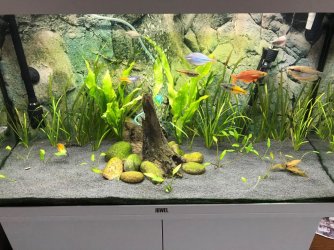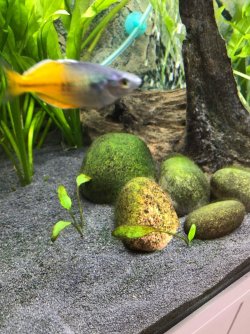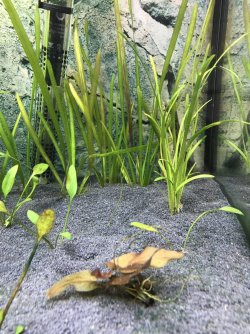I concur with essjay and will expand a bit to explain.
Aquatic plants require 17 nutrients, but it goes beyond just providing them. Some of the nutrients must be in certain proportions to each other. I won't go into all the detail as it gets complex. High-tech systems are very different; here you have very intense lighting and this has to be balanced with more nutrients, so such systems frequently have daily dosing of macro and micro nutrients, far more than the plants need; but each week a major water change removes the excess, and then you start over. This can work for plants, but if fish are present this is a problem, as this is detrimental to fish. Which is why so many of these high-tech aquatic gardens have no fish. It is a different approach.
With fish in the tank you need to be careful because every substance added to the water will get inside the fish. Leaving that and turning solely to the plants, you want the nutrients available but not in excess. Plants can shut down assimilation of some nutrients if there is an excess of some other nutrient. Some nutrients can be stored in the plant, though this depends upon the plant species (some do not do this) and the nutrient.
Dosing ad hoc this and that in a natural or low-tech method planted tank is inevitably going to cause problems for the plants and the fish. Seachem's Flourish Comprehensive Supplement for the Planted Aquarium has 14 of the necessary 17 nutrients but they are in proportion according to the requirements of the plants. The macros are minimal because these tend to come naturally from water changes and fish food. And as the name implies, this is a supplement to already-available nutrients. The three absent nutrients are going to be present in any aquarium naturally; oxygen, hydrogen and carbon. The latter is taken up by plants in the form of CO2, and the breakdown of organics in the substrate is the prime source of CO2, more than the respiration of fish, plants and bacteria.
Using a comprehensive supplement ensures all necessary nutrients are available. This does need to be tailored to the plants however, to avoid excess/deficiency. Algae can take advantage of these, so if the aquarium is balanced and algae is not a problem, chances are the nutrients for the plants are sufficient and adequate. "Algae" means problem algae that can take over everything, rather than common algae which is part of every healthy aquarium.




